Functional connectome of arousal and motor brainstem nuclei in living humans by 7 Tesla resting-state fMRI
- PMID: 35031472
- PMCID: PMC8856580
- DOI: 10.1016/j.neuroimage.2021.118865
Functional connectome of arousal and motor brainstem nuclei in living humans by 7 Tesla resting-state fMRI
Abstract
Brainstem nuclei play a pivotal role in many functions, such as arousal and motor control. Nevertheless, the connectivity of arousal and motor brainstem nuclei is understudied in living humans due to the limited sensitivity and spatial resolution of conventional imaging, and to the lack of atlases of these deep tiny regions of the brain. For a holistic comprehension of sleep, arousal and associated motor processes, we investigated in 20 healthy subjects the resting-state functional connectivity of 18 arousal and motor brainstem nuclei in living humans. To do so, we used high spatial-resolution 7 Tesla resting-state fMRI, as well as a recently developed in-vivo probabilistic atlas of these nuclei in stereotactic space. Further, we verified the translatability of our brainstem connectome approach to conventional (e.g. 3 Tesla) fMRI. Arousal brainstem nuclei displayed high interconnectivity, as well as connectivity to the thalamus, hypothalamus, basal forebrain and frontal cortex, in line with animal studies and as expected for arousal regions. Motor brainstem nuclei showed expected connectivity to the cerebellum, basal ganglia and motor cortex, as well as high interconnectivity. Comparison of 3 Tesla to 7 Tesla connectivity results indicated good translatability of our brainstem connectome approach to conventional fMRI, especially for cortical and subcortical (non-brainstem) targets and to a lesser extent for brainstem targets. The functional connectome of 18 arousal and motor brainstem nuclei with the rest of the brain might provide a better understanding of arousal, sleep and accompanying motor functions in living humans in health and disease.
Keywords: 7Tesla; Arousal network; Brainstem; Human functional connectome; Motor network.
Copyright © 2022. Published by Elsevier Inc.
Conflict of interest statement
Declaration of Competing Interest The authors declare no conflicts of interest.
Figures
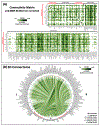

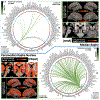

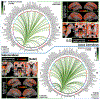
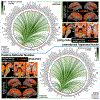
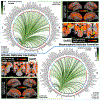

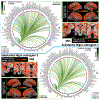
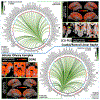



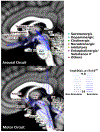
Similar articles
-
Functional connectome of brainstem nuclei involved in autonomic, limbic, pain and sensory processing in living humans from 7 Tesla resting state fMRI.Neuroimage. 2022 Apr 15;250:118925. doi: 10.1016/j.neuroimage.2022.118925. Epub 2022 Jan 21. Neuroimage. 2022. PMID: 35074504 Free PMC article.
-
In vivo structural connectome of arousal and motor brainstem nuclei by 7 Tesla and 3 Tesla MRI.Hum Brain Mapp. 2022 Oct 1;43(14):4397-4421. doi: 10.1002/hbm.25962. Epub 2022 May 28. Hum Brain Mapp. 2022. PMID: 35633277 Free PMC article.
-
In vivo functional connectome of human brainstem nuclei of the ascending arousal, autonomic, and motor systems by high spatial resolution 7-Tesla fMRI.MAGMA. 2016 Jun;29(3):451-62. doi: 10.1007/s10334-016-0546-3. Epub 2016 Apr 28. MAGMA. 2016. PMID: 27126248 Free PMC article.
-
Sleep and the functional connectome.Neuroimage. 2013 Oct 15;80:387-96. doi: 10.1016/j.neuroimage.2013.05.067. Epub 2013 May 24. Neuroimage. 2013. PMID: 23707592 Free PMC article. Review.
-
The multifunctionality of the brainstem breathing control circuit.Curr Opin Neurobiol. 2025 Feb;90:102974. doi: 10.1016/j.conb.2025.102974. Epub 2025 Jan 28. Curr Opin Neurobiol. 2025. PMID: 39879720 Review.
Cited by
-
Integrating brainstem and cortical functional architectures.bioRxiv [Preprint]. 2023 Oct 26:2023.10.26.564245. doi: 10.1101/2023.10.26.564245. bioRxiv. 2023. Update in: Nat Neurosci. 2024 Dec;27(12):2500-2511. doi: 10.1038/s41593-024-01787-0. PMID: 37961347 Free PMC article. Updated. Preprint.
-
Model-based navigation of transcranial focused ultrasound neuromodulation in humans: Application to targeting the amygdala and thalamus.Brain Stimul. 2024 Jul-Aug;17(4):958-969. doi: 10.1016/j.brs.2024.07.019. Epub 2024 Jul 31. Brain Stimul. 2024. PMID: 39094682 Free PMC article.
-
Mapping cross-modal functional connectivity of major neurotransmitter systems in the human brain.Brain Struct Funct. 2025 Aug 19;230(7):137. doi: 10.1007/s00429-025-02996-4. Brain Struct Funct. 2025. PMID: 40828212 Free PMC article.
-
Integrating brainstem and cortical functional architectures.Nat Neurosci. 2024 Dec;27(12):2500-2511. doi: 10.1038/s41593-024-01787-0. Epub 2024 Oct 16. Nat Neurosci. 2024. PMID: 39414973 Free PMC article.
-
State-of-the-art imaging of neuromodulatory subcortical systems in aging and Alzheimer's disease: Challenges and opportunities.Neurosci Biobehav Rev. 2023 Jan;144:104998. doi: 10.1016/j.neubiorev.2022.104998. Epub 2022 Dec 13. Neurosci Biobehav Rev. 2023. PMID: 36526031 Free PMC article. Review.
References
-
- Amunts K, Kedo O, Kindler M, Pieperhoff P, Mohlberg H, Shah NJ, Habel U, Schneider F, Zilles K, 2005. Cytoarchitectonic mapping of the human amygdala, hippocampal region and entorhinal cortex: intersubject variability and probability maps. Anat Embryol (Berl) 210, 343–352. 10.1007/s00429-005-0025-5 - DOI - PubMed
Publication types
MeSH terms
Grants and funding
LinkOut - more resources
Full Text Sources
Medical

